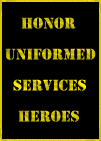|
|
|
The Making of Modern Warfare on LandIt was more of a carefully organized and choreographed contest, mainly carried out at long range by concerted fire from hand-held firearms and artillery. Achieving Continuous FireArmies would stand shoulder to shoulder in “boxes”, firing their muskets or rifles from the security of the defense this formation provided. A line of muskets firing in unison from the front rank of a ‘box’ was terrifying proposition for oncoming soldiers, particularly as the next rank was able to fire immediately afterwards. Each rank knelt down after firing while the next rank fired over their heads. They then retired to the back of the ‘box’ to reload. While this was happening, another rank moved up, fired, retired and reloaded. It was the nearest thing to continuous fire that muskets could achieve. For army commanders, the new battle strategy meant they could deploy their forces to the best effect, rather than throwing them into a hand-to-hand fray on a battlefield that was, to all intents and purposes, little more than a killing ground. For the rank and file soldier, more organized battle made the ‘boxes’ safer than savage the close quarter sword fighting or hitting the enemy with musket butts, daggers or even fists, methods that still had their part to play in warfare. The cavalry known as ‘dragoons’ were also in the mix, laying about them from horseback with sabers and muskets. Many Wars to FightIn the 18th and 19th centuries, nine or ten separate wars were fought in Europe itself; mainly these were part of the protracted struggle that took place between 1796 and 1815 against Napoleon Bonaparte and the forces of the French Revolution. However, many more conflicts took place outside Europe, including colonial wars which were fought to expand the empires of Britain or France by acquiring new colonies. During these far-off wars, European soldiers had to operate in the unfamiliar, often unhealthy territory. In places like India or Africa, soldiers had no natural defense against local infections and more of them could die of the disease than died in battle. Facing Savage EnemiesFrequently, they faced old-fashioned ‘native’ armies whose style of warfare was disorganized but intensely savage. Basically, they were no match for a well-trained, well drilled professional force, but they could be horrifically effective when it came to mass killing. Even in a civil war, fought ‘at home’, so to speak, the disease could more than double the number of men who died fighting. This was certainly true of the American Civil War (1861-1865) in which an estimated 414,152 men on both sides died of disease whereas estimated battle casualties amounted to 204,070, less than half that number. Florence Nightingale in the Crimean War Many soldiers who fell sick were effectively killed by the appalling conditions in hospitals which were highlighted by Florence Nightingale after 1854 when she arrived with thirty-eight nurses at Scutari to tend casualties of the Crimean War of 1853 to 1856. Conditions at Scutari Hospital were so filthy and verminous that Nightingale suggested there should be a notice at the entrance inscribed with the words: ‘Abandon Hope All Ye Who Enter Here’. Chances of survival vastly improved, though, when Nightingale imposed strict standards of sanitation and hygiene and provided what today would be termed psychological care and comfort for the numerous casualties. The Swiss philanthropist Jean Henri Dunant was likewise shocked when he witnessed the Battle of Solferino in Italy in 1859 and saw the plight of the wounded who were left to die on the battlefield where they fell. As a result of this experience, Dunant founded the Red Cross organization in 1864 to give aid and treatment to battle casualties on both sides in a war. War Acquires more Killing PotentialBy this time, more advanced and sophisticated armaments were once again changing the way in which wars were fought. In place of the single-shot musket or rifle, armies now used the repeating rifle which could fire several shots one after the other. The ball-shot previously used was replaced by bullets which, when fired from a spirally grooved rifle barrel, spun towards their targets with greater accuracy than the smooth-bore musket had ever managed. At this stage, the machine gun which later became the horror weapon of World War One, made its first appearance in battle; one of these guns, the ‘quick-fire’ Gatling gun invented in 1861-1862 by Richard Gatling was a multiple killers which could spray twelve hundred bullets a minute over a wide area. The use of smokeless powder in bullets and shells cleared a battlefield of the clouds of smoke that had once obscured opposing armies, so making them much more visible and a great deal easier to shoot and kill. Thankfully, the military on active duty has the protection of Servicemembers Civil Relief Act (SCRA) that, even they are at war, they can be at peace. Because I have adopted several POW/MIA's these webrings and awards were placed on their own page of honour. If you have come from surfing the wonderful POW/MIA Webrings, please click on the HOME button at the bottom of this screen to be taken to the main page of my POW/MIA section so that you can learn about each service member and information on contacting your congressmen to help bring them ALL home! Main Index will open in separate window as to not disrupt the flow of the webrings. Thank You! Blessings to you and yours. ^i^ |
Duty, Honor, Country!

They Live By The Code!


"This Award is issued to this site by the Advisory Board of the POW/MIA Freedom Fighters Organization, for it's early and steadfast commitment to our missing Warriors" 
|